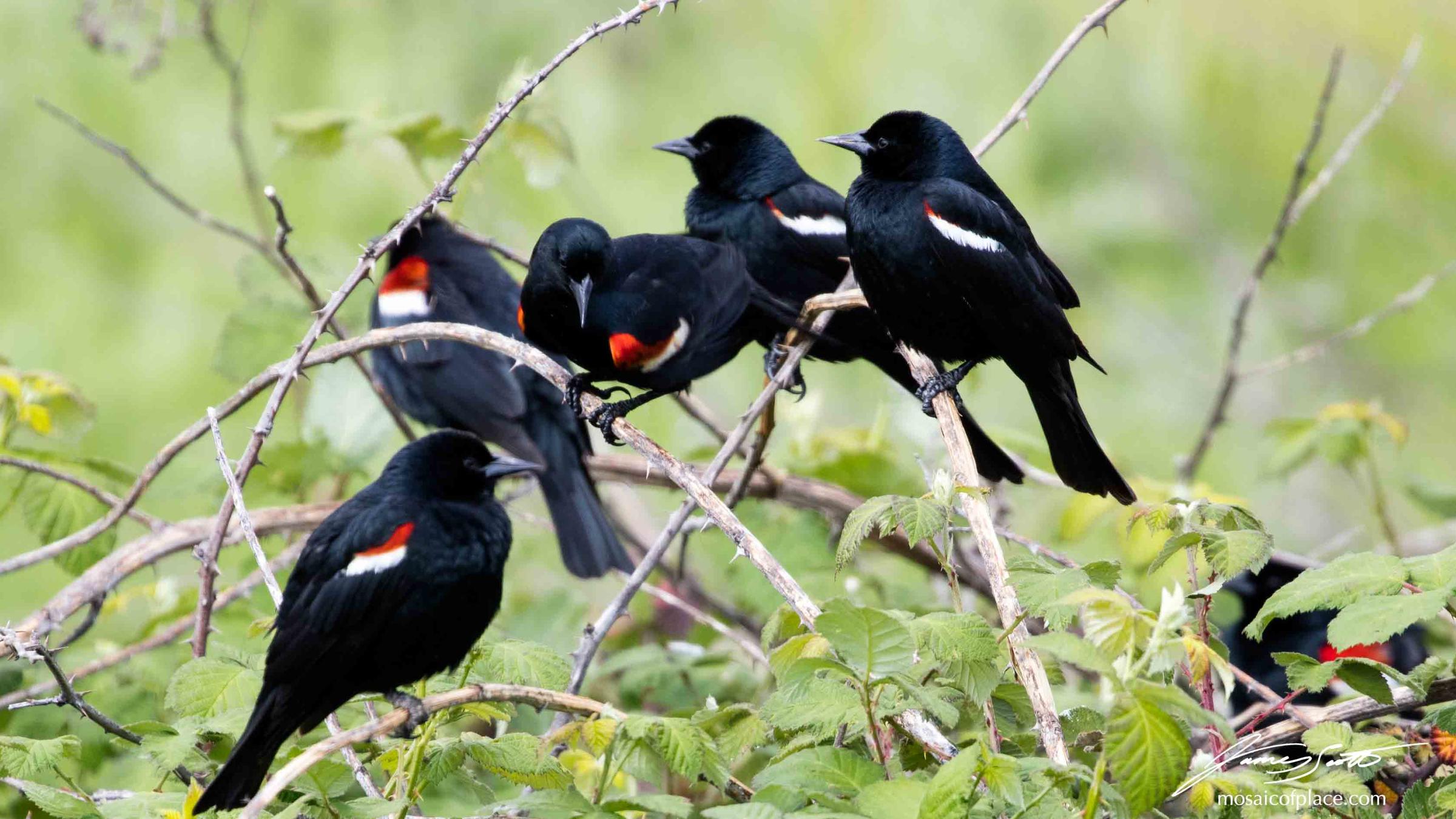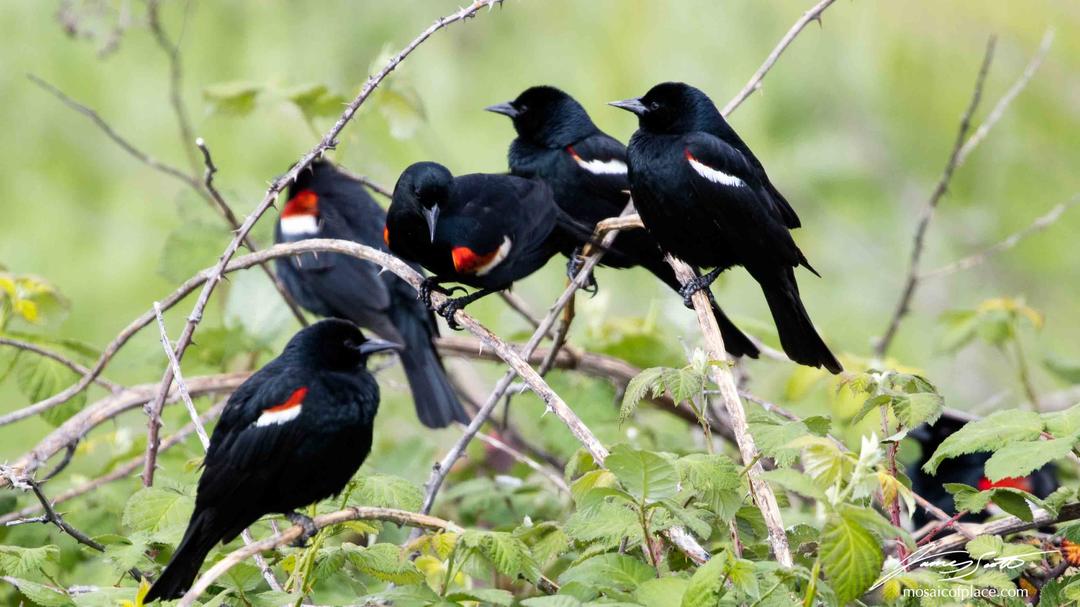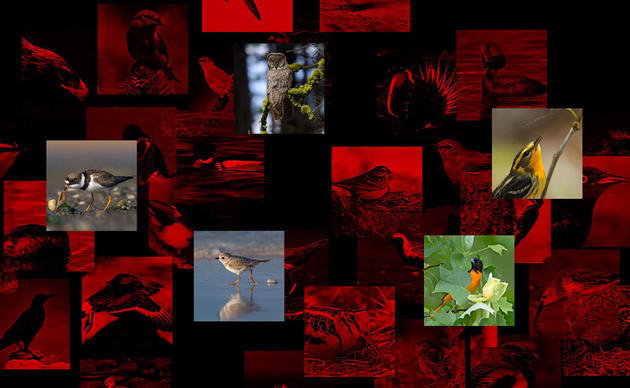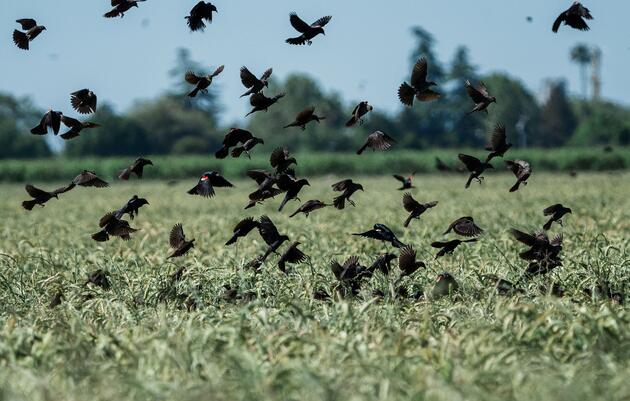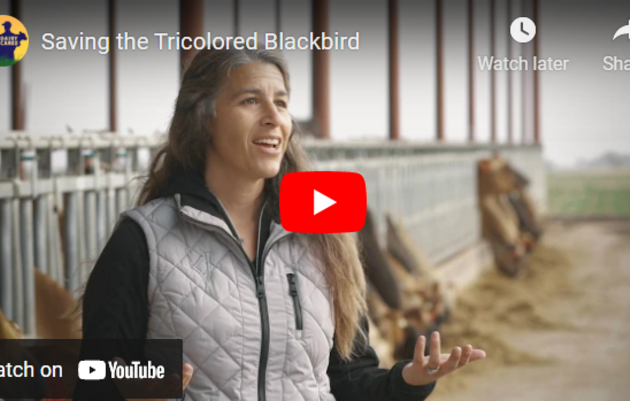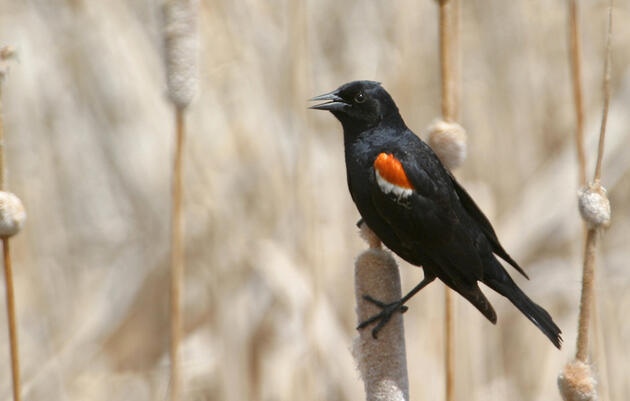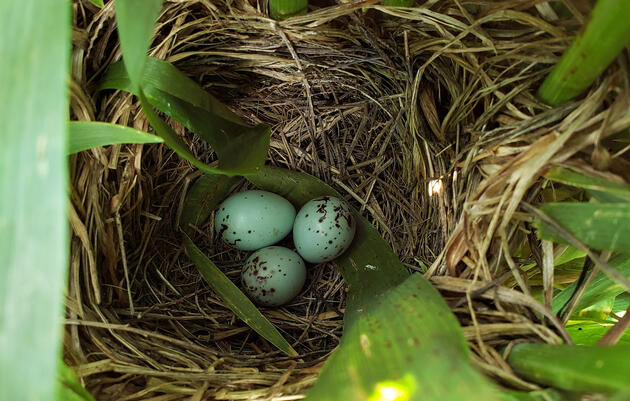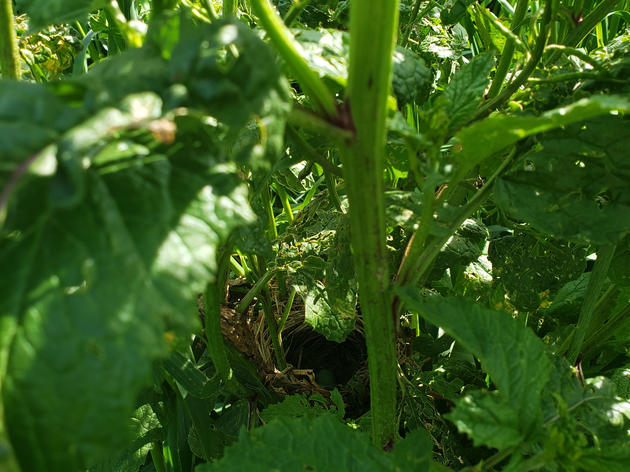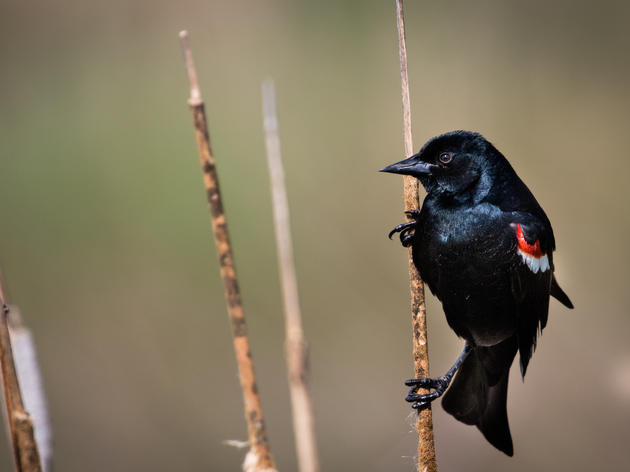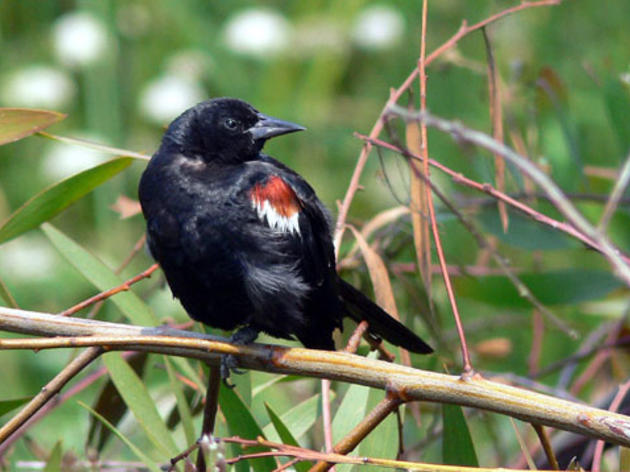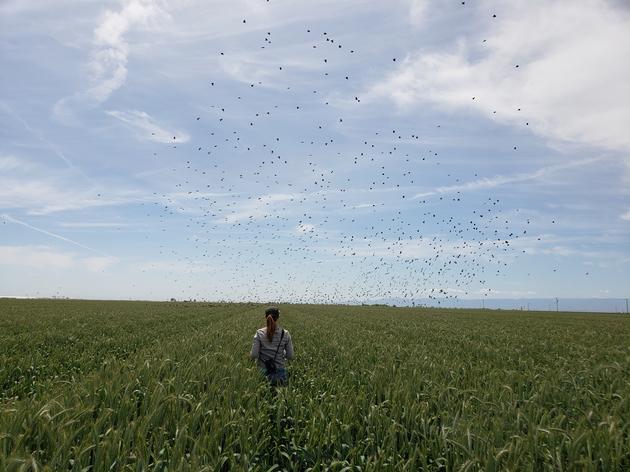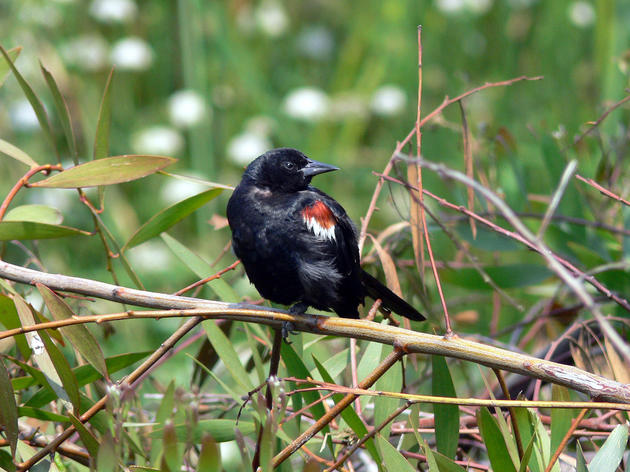The Tricolored Blackbird is North America's most colonial nesting landbird. Found almost exclusively in California, a single breeding colony can teem with over 35,000 birds, sometimes all settled into a single field or small wetland to raise their young. While similar to the more widespread Red-winged Blackbird, the male Tricolored Blackbird is distinguished by its red shoulder patch with a bright white wing-bar.
In the 19th century, Tricolored Blackbird flocks were described as numerous and often consisted of hundreds of thousands of birds. Since then, the population has declined from several million to approximately 177,000 today. Over a 10-year period from 2007 to 2016, it is estimated the population declined by as much as 34%.
There are many reasons for this decline. But the loss of native wetland and nearby foraging habitats along the coast and in the Central Valley is the main issue. In more recent years, the species has become dependent on agricultural lands, with most of the largest colonies nesting in grain fields. A real dilemma develops as Tricolored Blackbird young typically have not yet left the nest before the time farmers need to harvest their crop, and harvesting destroys Tricolored Blackbird nests and young. In some cases, tens of thousands of nests have been lost in a single field.
Each year, these birds gather in highly social colonies to raise their young throughout the San Joaquin Valley, Sacramento Valley, Sierra Foothills, Central Coast, and Southern California. However, with the continuing loss of habitat and the places they need to survive are becoming scarcer. As a result of this continued habitat loss and drastic population decline, Tricolored Blackbirds were recently listed under California's Endangered Species Act thus highlighting the recovery of this species is more critical than ever.
Audubon California's Xerónimo Castañeda shows us a great Tricolored Blackbird colony in the Central Valley.
Tricolored Blackbirds Once Faced Extinction—Here's What's Behind Their Exciting Comeback
For a decade Audubon California and partners have worked with farmers to delay harvests where the birds nest, solving what was once the biggest threat to the species.
Farmers Play Key Role in Protecting Tricolored Blackbirds
Watch this video by Audubon's partner Dairy Cares in the Central Valley
Collaborative Conservation
We work closely with landowners and partners in the Tricolored Blackbird Working Group to protect the Tricolored Blackbird across California.
How Private Landowners Can Save Tricolored Blackbirds
Farms and ranches will play a critical role in conserving Tricolored Blackbirds across the Central Valley.
Latest News
Cool Tricolored Blackbird colony in the Central Valley
Audubon California's Xerónimo Castañeda shows off a great Tricolored Blackbird colony in the Central Valley. Learn more about our work to protect this great species here.
Sights and sounds of the search for Tricolored Blackbird colonies
Our own Xerónimo Castañeda captured these shots from the road during his recent searches through the Central Valley looking for Tricolored Blackbirds. Learn more about our work to save Tricolored Blackbirds here.
Marking off a Tricolored Blackbird colony in Merced County
Audubon California's Xerónimo Castañeda takes us up close to a Tricolored Blackbird colony in Merced County. In just a couple of weeks, the number of colonies in the southern part of the Central Valley has spiked. And all these colonies need to be protected.
Tricolored Blackbird breeding season is off and running
Audubon California's Xerónimo Castañeda talks about the beginning of the 2019 Tricolored Blackbird breeding season. He even talks about finding his first found colony of the season. This is an important time for the Tricolored Blackbird, as it is now listed as Threatened under the California Endangered Species Act. That said, we still need to identify the colonies and do everything we can to protect them. Learn more about our efforts to save this terrific bird here.
Tricolored Blackbird breeding season is underway
Tricolored Blackbirds have begun nesting and our biologists are out in the field making sure these rare birds have a chance to survive. Field Technician Kim Sawyer shot this short video at BLM's Atwell Island just a few days ago. If you would like to help us save this great California birds, please consider making a donation.
How you can help, right now
Get Audubon CA in Your Inbox
Our newsletter is fun way to get our latest stories and important conservation updates from across the state.
Donate to Audubon
Help secure the future for birds at risk from climate change, habitat loss and other threats. Your support will power our science, education, advocacy and on-the-ground conservation efforts.
HOTSPOT: Flyover of California's Birds and Biodiversity
California is a global biodiversity hotspots, with one of the greatest concentrations of living species on Earth.

